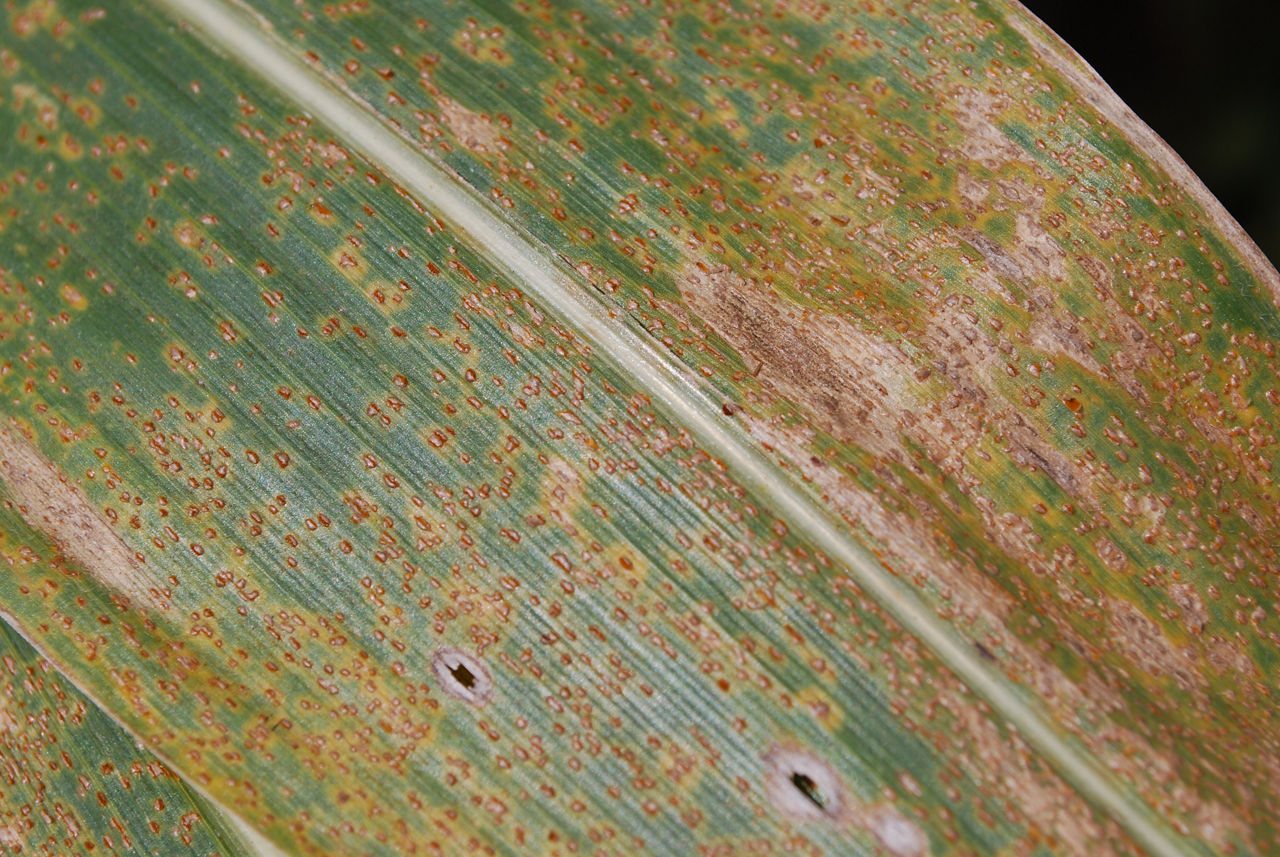5 MIN READ
Distinguishing between Common and Southern Corn Rust
July 21, 2021
Common and Southern rust are two corn rusts that may infect the US corn crop each year. Southern rust is a greater concern because it is more aggressive and potentially a larger yield robber than common rust. They do not overwinter in the Midwestern states; therefore, the spores that cause infection move into the Midwest each season with the wind from Mexico, the Caribbean, and the southern US where the spores do overwinter.
The severity of both rusts can vary greatly from year to year depending on the growing conditions. A good way to track the progression of southern rust each year is to follow industry agronomists or university plant pathologists on social media, sign up for their agronomy updates, and follow the diseases progression on the United States Department of Agriculture, Regional IPM Centers website https://corn.ipmpipe.org/southerncornrust/. Common rust is commonly found throughout the corn growing states but usually causes very little if any economic loss.
Southern rust, on the other hand, can reach an economic threshold, where treatment is warranted, quite quickly. Corn leaves can be covered with the pustules of Southern rust which can kill the leaf tissue. The loss of leaf tissue can decrease sunlight absorption and can ultimately reduce yield potential.2 Additionally, the loss of leaf tissue can reduce plant health, open the plant up to secondary diseases, and cause premature plant death which can compromise late-season plant integrity.
Southern rust is potentially more devastating to later planted fields since these fields could become infected at an earlier stage in the corn plant’s life cycle compared to earlier planted fields. Another keynote is that younger corn leaves are more vulnerable to southern rust infection than more mature leaves.2
Identification
Southern rust can be identified with bright orange clustered pustules on the upper side of the corn leaf (Figure 1) while common rust has a dark brick-red colored pustule that develops on upper and lower leaf surfaces (Figure 2). The fact that common rust appears on both leaf surfaces is a key distinction when differentiating the two rusts.1 Another differentiator is that common rust has fewer pustules that are sporadic across the leaf surfaces. Inversely, southern rust has a high number of pustules arranged very densely on the leaf surface.

Favorable Disease Environments
Key development environments for two types of rust can overlap; however, the ideal condition for each disease varies. Common rust is usually found earlier in the season, especially in the Midwest, since this disease thrives in a temperature range of 60° to 77° F.1 Moisture is needed for it to infect and spread on a corn plant. This need for moisture is often provided by a cool evening that results in formation of dew on the plant’s leaf surface. High temperatures and dry conditions help deter the infection and spread of common leaf rust.
Southern rust is usually found later in the growing season because it thrives in a temperature range of 77° to 82° F.1 However, it can continue to develop and spread above 82° F and be active in July and August when temperatures are generally higher. Southern rust requires less moisture and can spread with very little moisture. Like common rust, light dew can be plenty for it to propagate and spread.
Scouting Tips
For common rust, check fields earlier in the season when there has been sufficient moisture for infection and temperatures have been in the 60 to 70’s for several weeks. Check for pustules on both leaf surfaces.
Scouting for southern rust can usually be delayed until later in the season or possibly not at all depending on how far north you are located. Look for pustules on the upper leaf surface since this is where the spores land and spread across the leaf. Weekly scouting is required because infection and spread of the disease can occur rapidly and it is best to be able to monitor the disease from the onset of infection.
Management of Rusts
Choose corn products with good resistance to these diseases as corn products can vary greatly in resistance levels (Figure 2). Since both diseases are fungal diseases, fungicides are an option for control. A fungicide application at tassel can be a good management practice to help protect corn from both rusts, but mainly southern rust. Fungicide applications may not be warranted every time. However, it is a good idea to check your fields at and after tassel for disease pressures to determine if a fungicide application is warranted. Disease pressure, cost of application, and crop prices should be considered when determining if a fungicide application is justified.2 It is good practice to use a fungicide with at least two modes of action to help prevent the development of fungicide resistance.

Austin Merz
Technical Agronomist
Sources
1Wise, K. 2010. Diseases of corn. Common and southern Rusts. BP-82-W. Purdue University Extension. www.extension.purdue.edu.
2Jackson-Ziems. T.A. 2014. Rust diseases of corn in Nebraska. G1680. NebGuide. University of Nebraska Extension. https://extensionpublications.unl.edu/assets/pdf/g1680.pdf
Web sites verified 5/20/21.
